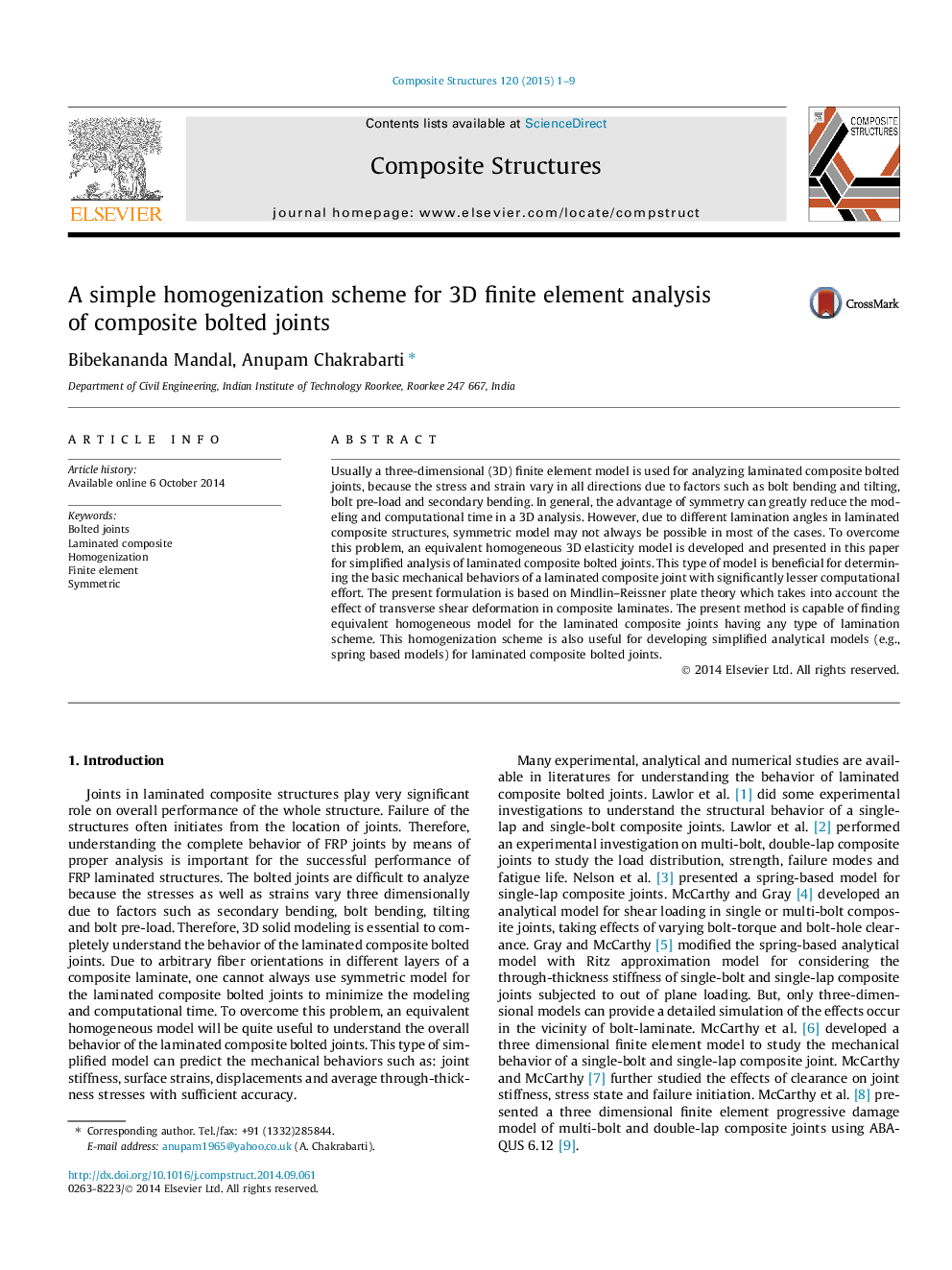| Article ID | Journal | Published Year | Pages | File Type |
|---|---|---|---|---|
| 6707080 | Composite Structures | 2015 | 9 Pages |
Abstract
Usually a three-dimensional (3D) finite element model is used for analyzing laminated composite bolted joints, because the stress and strain vary in all directions due to factors such as bolt bending and tilting, bolt pre-load and secondary bending. In general, the advantage of symmetry can greatly reduce the modeling and computational time in a 3D analysis. However, due to different lamination angles in laminated composite structures, symmetric model may not always be possible in most of the cases. To overcome this problem, an equivalent homogeneous 3D elasticity model is developed and presented in this paper for simplified analysis of laminated composite bolted joints. This type of model is beneficial for determining the basic mechanical behaviors of a laminated composite joint with significantly lesser computational effort. The present formulation is based on Mindlin-Reissner plate theory which takes into account the effect of transverse shear deformation in composite laminates. The present method is capable of finding equivalent homogeneous model for the laminated composite joints having any type of lamination scheme. This homogenization scheme is also useful for developing simplified analytical models (e.g., spring based models) for laminated composite bolted joints.
Related Topics
Physical Sciences and Engineering
Engineering
Civil and Structural Engineering
Authors
Bibekananda Mandal, Anupam Chakrabarti,
